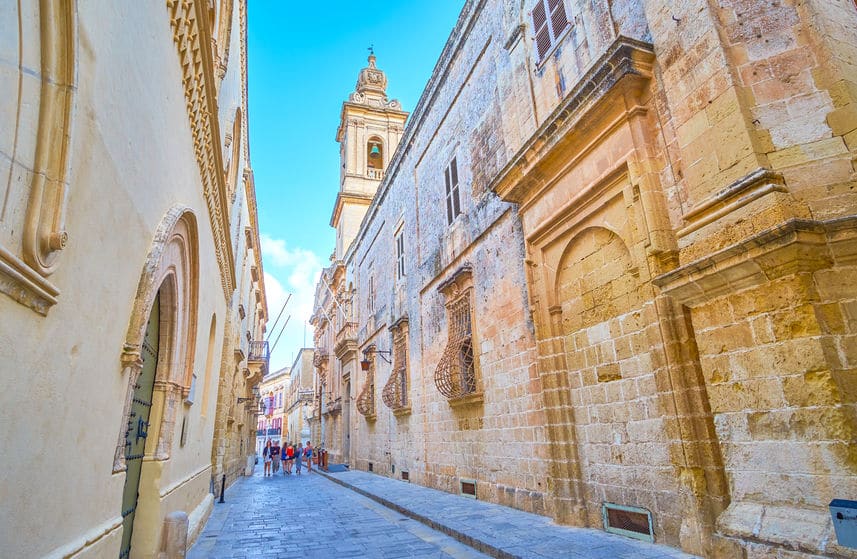Mdina, Malta – Travel Tips
Category
Categories
Popular Articles

**Overview of the Destination**
Mdina, Malta, is a historical city known for its stunning architecture, labyrinth-like streets, and ancient fortifications. Often referred to as the “Silent City,” its tranquil ambiance and rich history have drawn millions of curious travelers worldwide. Mdina was Malta’s ancient capital and is a UNESCO World Heritage Site. Its Roman, medieval, and baroque influences make it distinctive.
**Best Time to Visit**
The best time to visit Mdina is during the spring (March to June) when the weather is warm and not too hot. During this period, you can bear witness to the colourful festa season where local communities celebrate their patron saints with lots of food and music.
Alternatively, the autumn season (September to November) offers cooler temperatures and the Medieval Mdina Festival typically held in October celebrating the city’s medieval period with reenactments, food, and crafts.
**Climate & What to Pack**
Malta has a Mediterranean climate with hot, dry summers and mild, wet winters. Spring and autumn are comfortable with temperatures ranging from 15°C to 25°C. Pack lightweight clothing for summer with sunblock and a hat for protection. During the winter months, temperatures are usually between 10°C and 15°C, so bring a jacket, scarf, and umbrella.
**Getting There**
The nearest airport is Malta International Airport, which is approximately 10 kilometres away from Mdina. There are regular buses (routes 51, 52, and 53) from the airport to Mdina. Citizens of EU countries, USA, Canada, Australia, and New Zealand do not need a visa for stays up to 90 days.
**Getting Around Locally**
Mdina is a walkable city. Due to its compact size and the ban on cars (except for residents), walking is the best way to get around. Taxis and rideshares are also available. Renting a car may not be necessary given the city’s size and its quality public transport.
**Safety Tips**
Mdina is generally safe, but like any other tourist destination, keep an eye on your belongings. The Maltese are incredibly friendly and approachable, but avoid walking alone late at night. Always respect local customs and dress modestly while visiting sacred places.
**Top Things to Do & See**
Top attractions in Mdina includes the medieval city walls, St. Paul’s Cathedral, and the Mdina Dungeons. Don’t overlook the twisty backstreets, which can reveal hidden gems like charming cafés or artisan shops. The Roman Villa, located just outside the city walls, is a must-visit.
**Where to Stay**
For luxury stays, consider the Xara Palace Relais & Chateaux within Mdina, offering stunning city views. Mid-range options can be found in neighboring Rabat like Point de Vue. For budget-conscious travellers, guesthouses and hostels are available in the surrounding areas.
**Food & Local Cuisine**
Maltese cuisine is an exciting blend of Mediterranean flavors. Local favorites include pastizzi (a traditional pastry filled with ricotta or peas), rabbit stew, and ‘hobz biz-zejt’ (Maltese bread with tomato paste, capers, and anchovies). Check out Mdina’s popular Bacchus Restaurant or grab a bite from the pastizzi shops in Rabat for authentic fare.
**Cultural & Practical Tips**
The official languages of Malta are Maltese and English. The currency is the Euro, and it is customary to tip 10% at restaurants. Malta uses the Type G plug, the same as the UK, and the standard voltage is 230V. Free Wi-Fi is available in some public places and most hotels, cafes, and restaurants.
**Sustainable or Responsible Travel Tips**
Respect the local culture and avoid littering. Preserve Mdina’s heritage by not touching ancient structures, walls, or monuments.
**Personal Travel Tip**
End your day in Mdina at the city walls, looking out over the island as the sun sets—the views are incredible, and the golden hues of the city’s sandstone buildings make a beautiful end to an unforgettable trip. Embrace the tranquillity that this “Silent City” offers and let the history of the place whisk you back in time.










